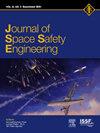Concept of approach to advanced Russian orbital station
IF 1.7
Q3 ENGINEERING, AEROSPACE
引用次数: 0
Abstract
At present, the final approach of Russian spacecraft to the International Space Station (ISS) is carried out in automated mode. To decrease the relative velocity, several braking burns are done to ensure "passive safety", when a free flying vehicle does not collide with the ISS. Under this approach, the implemented trajectories do not provide the crew with complete information about the relative motion, making manual control complicated. For this reason, switching to manual mode is allowed only at the final stage of braking, flying around or docking. In other cases, the docking may need to be postponed that means to perform the rendezvous again jeopardizing the entire mission. In order to improve the docking reliability during low-Earth orbit missions and, eventually, lunar missions, it is required to provide convenient manual control at all stages of approach in compliance with safety requirements. The authors have reviewed the manual approach heritage from the flights to the Salyut and Mir orbital stations as well as from the Space Shuttle missions. The paper proposes the technique that allows expanding the application of manual control by selecting a convenient approach trajectory with complete information about the relative motion. This technique is expected to be implemented during missions to the Russian Orbital Station.
接近先进的俄罗斯轨道空间站的概念
目前,俄罗斯航天器对国际空间站(ISS)的最终接近是在自动化模式下进行的。为了降低相对速度,当自由飞行的飞行器不与国际空间站相撞时,为了确保“被动安全”,需要进行几次制动燃烧。在这种方法下,实现的轨迹不能向机组人员提供有关相对运动的完整信息,使手动控制变得复杂。因此,只有在制动、绕飞或对接的最后阶段才允许切换到手动模式。在其他情况下,对接可能需要推迟,这意味着再次执行交会危及整个任务。为了提高近地轨道任务乃至月球任务的对接可靠性,需要在接近的各个阶段提供方便的符合安全要求的手动控制。作者回顾了礼炮号和和平号轨道站的飞行以及航天飞机任务的人工接近遗产。本文提出了一种通过选择具有完整相对运动信息的方便接近轨迹来扩展手动控制应用的技术。这项技术预计将在俄罗斯轨道站执行任务期间实施。
本文章由计算机程序翻译,如有差异,请以英文原文为准。
求助全文
约1分钟内获得全文
求助全文
来源期刊

Journal of Space Safety Engineering
Engineering-Safety, Risk, Reliability and Quality
CiteScore
2.50
自引率
0.00%
发文量
80
 求助内容:
求助内容: 应助结果提醒方式:
应助结果提醒方式:


